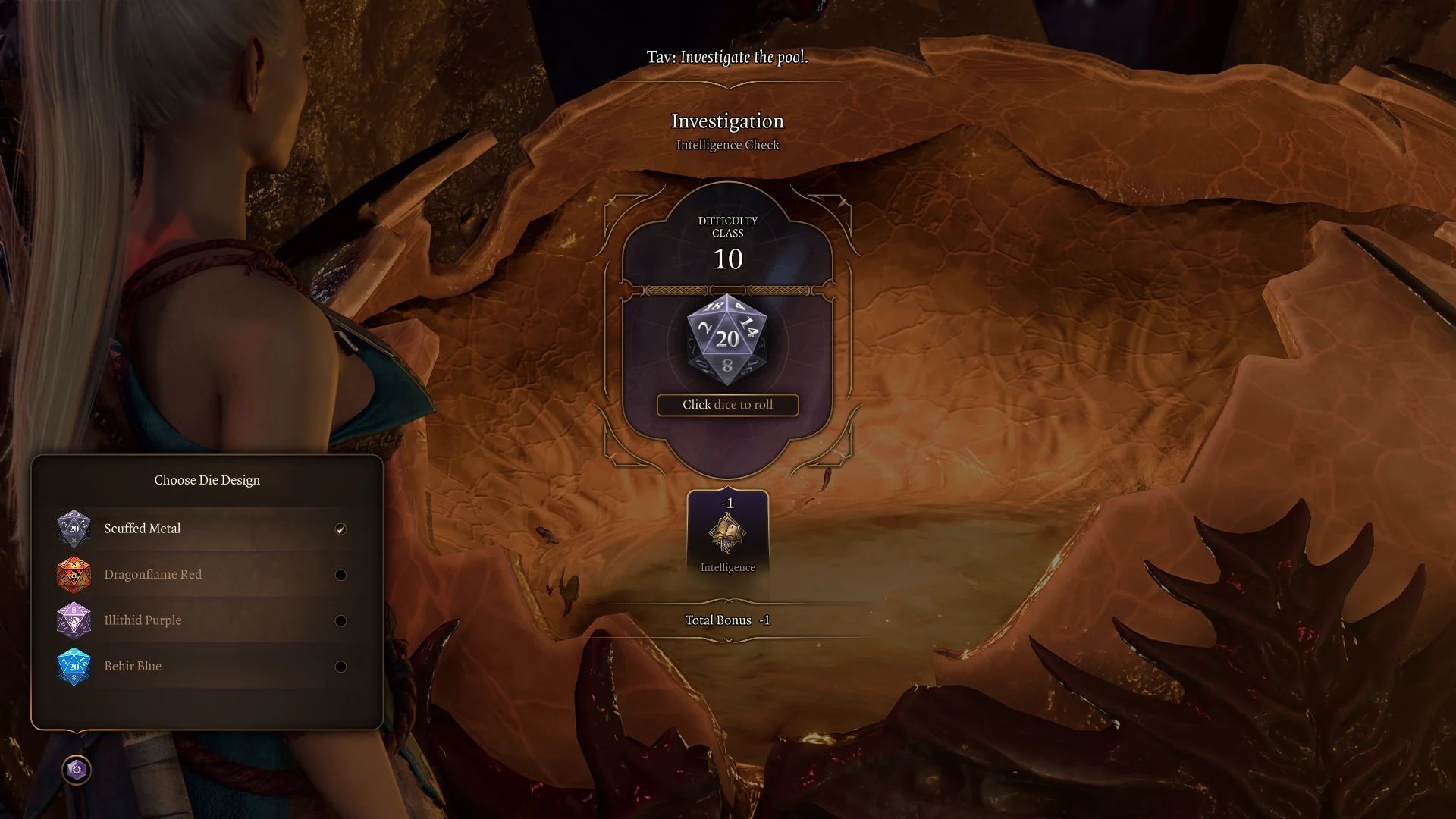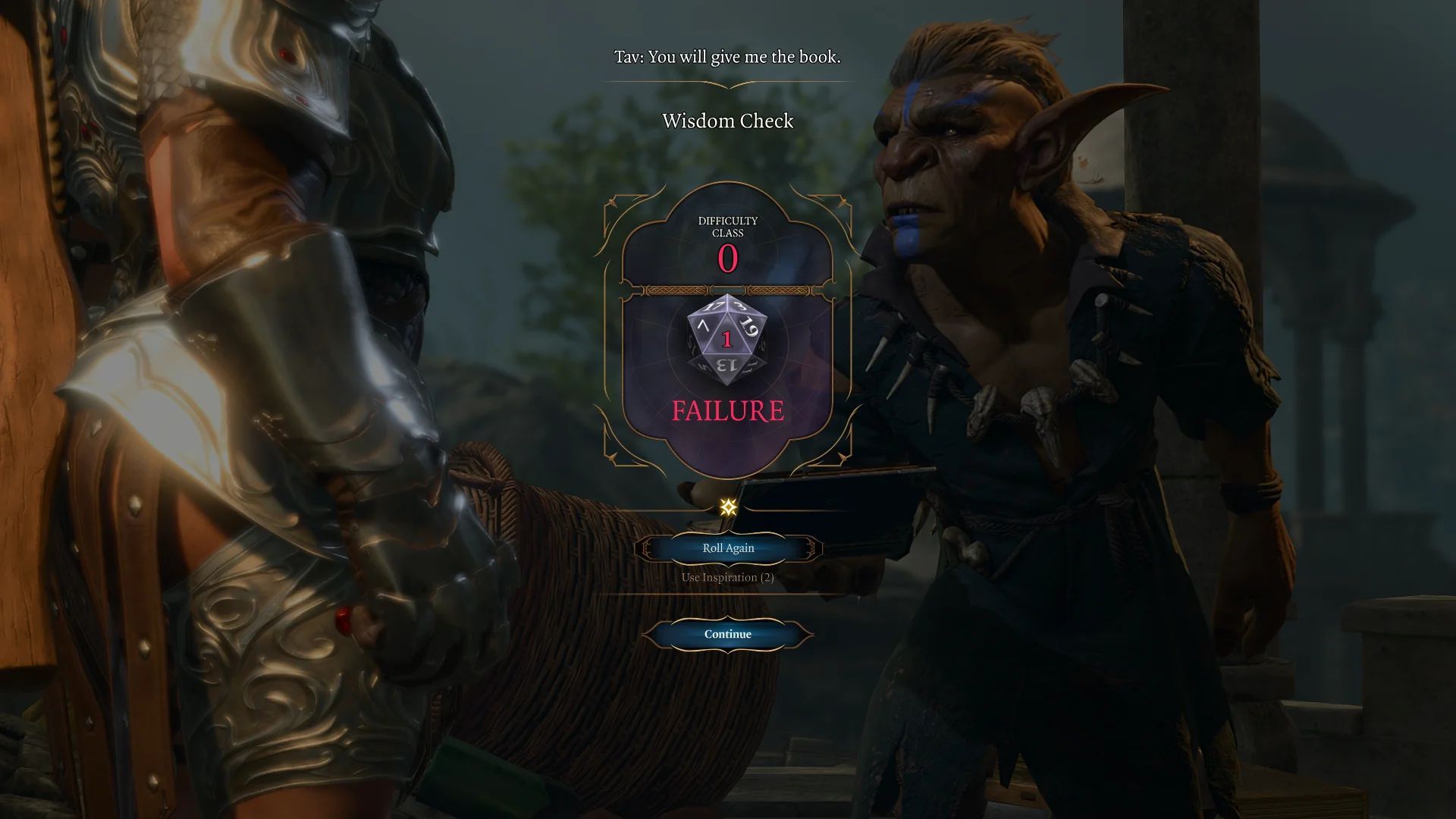Venturing into the immersive realm of Baldur’s Gate 3 can be really exciting, especially thanks to the chance factors such as the BG3 Critical Success mechanic. On the contrary side of the intricacies of this role-playing masterpiece lies a concept that invokes both groans and camaraderie among players: the Critical Miss. But what exactly do these terms entail, and why does it hold such significance within the game’s mechanics?
In the realm of Baldur’s Gate 3, a Critical Miss is the epitome of misfortune, representing an automatic failure on a dice roll. No matter the modifiers or bonuses you might muster, a Critical Miss renders success unattainable. Imagine amassing a stack of four +2 modifiers to tackle a challenge with a difficulty rating of eight. Despite your efforts, if the dice land on a dismal one, your endeavors crumble into failure, regardless of the cumulative total of nine. The number one serves as the harbinger of defeat, prevailing over any mitigating circumstances surrounding the roll.

How do the BG3 critical success and dice rolls work?
Throughout your journey in Baldur’s Gate 3, you’ll encounter moments when fate demands a roll of the dice to surmount various tasks. These tasks encompass a diverse range, from utilizing skills and abilities to manipulating equipment or executing specific actions. Each of these actions is anchored to your character’s stats, shaping the complexity of the endeavor at hand.
Complicating matters are the concepts of Advantage and Disadvantage. When either of these factors comes into play, an extra dice enters the equation. With Advantage, you embrace the higher of the two rolls, while Disadvantage relegates you to the lower result. Engaging enemies from a flank with two of your characters bestows Advantage upon you during combat, enhancing your odds.
Modifiers: Layers of complexity
Modifiers further embellish the intricacy of dice rolls, arising from your character’s class, cast spells, or situational context. This dynamic allows for the addition or subtraction of values from your score. The stability of some values juxtaposes with the randomness of others, which hinge upon yet another dice roll.

Delving into an illustrative example, consider a scenario where the challenge’s difficulty is pegged at 10. With no Advantage or Disadvantage in play, a singular dice roll dictates your fate. Your Charisma stat affords a +1 bonus, while the Guidance spell blesses you with a +1D4 enhancement. As the dice tumbles, the potential modifier oscillates between 2 and 5, contingent upon the outcome of this secondary roll.
The radiance of Critical Success
Conversely, the cosmos of the game houses the concept of a BG3 Critical Success, embodied by a roll of 20. This pinnacle of achievement guarantees success, irrespective of odds or hurdles. In the realm of combat, a BG3 Critical Success orchestrates a symphony of intensified impact, amplifying damage dealt. The potency of this feat scales with your character’s skills, class, and abilities, further accentuating the prospect of monumental success.

As you journey through the multifaceted expanse of Baldur’s Gate 3, the significance of Critical Misses and Critical Successes becomes intertwined with your narrative. Each dice roll, laden with potential and peril, shapes your destiny and fuels the immersion that is synonymous with this enchanting world. Embrace the uncertainty, for within it lies the tapestry of adventures waiting to be woven anew with every roll of the dice.
Meanwhile, if you wish to increase your non-in-game luck, make sure to check out our article on how to change your dice skin in Baldur’s Gate 3 to make sure that fortune is on your side.
Featured image credit: Steam





